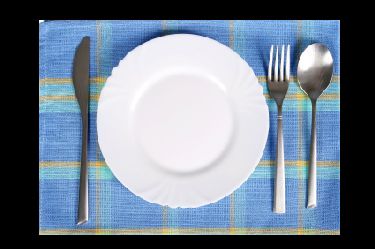Eating Well
Eating Well
Too Much Information?
If you often find yourself on the "information super highway," you know that there is an abundance of information available related to healthy eating. It may come from health professionals, scientists, from the food industry, from the government, from journalists, from doctors, from diet gurus, and the list goes on and on.
Some of these sources have a vested (monetary) interest in what we eat--they may be funded by food companies or a particular lobby such as corn growers or the sugar industry.
Of course, some are simply trying to be informative and helpful. It is up to you to figure out which is which!
Every week there is a new “study” that reveals some new aspect of nutrition and healthy eating. If you find yourself confused by this barrage of information, you are not alone. Even a person trained in the field of nutrition, can be confused by the often conflicting reports.
To help you sort out this information, here is a list of some basic eating guidelines that will help you reach your goal of living long and feeling well.
Click here for a printable copy of this list.
Eating Well Guidelines
Drink 6-8 glasses of filtered water each day, while avoiding soft drinks and limiting fruit juice.
Eat a variety of fresh, whole foods, including selections from the five food groups—Vegetables, Fruits, Grains, Meat and Legumes and Dairy.
Include at least 5 servings of fruits and vegetables each day, with an emphasis on vegetables.
Include a serving of low-fat versions of good quality protein with each meal and snack.
Include fiber foods with each meal so that you get a total of 25-30 grams of fiber each day.
Eat a balanced diet with a ratio of 40-30-30 of good carbs, low-fat protein and good quality fats respectively.
Eat colorful foods for their phytonutrients.
Eat good carbs such as whole grains, vegetables and fruits.
Choose unsaturated fats such as olive oil, avocado, nuts and seeds.
Choose low-fat versions of dairy products and leaner meats.
Stay away from empty calories that provide calories but little nutrition.
Eat fewer prepackaged foods and fast foods, which are generally over-processed, full of preservatives and high in sodium.
Lower your intake of foods with added salt and sugar.

Sugar by other names
If you are trying to cut down on sugar or have medical issues that necessitate avoiding sugar, you need to be aware of these other terms for sugar. Even if you don’t have these medical problems, be aware that separating the sugars into different names may make the food look like it has less sugar than it really does.
The best way to know how much sugar is in the product is to check the “Sugars” category under “Carbohydrates” on the Nutrition portion of the food label.
For instance, many breakfast cereals may contain sugar in the form of corn syrup, honey, cane sugar, brown rice syrup, etc., and each item will be listed separately on the label so that it looks like the product has less sugar. If they grouped all these types of sugars together, sugar would be the first ingredient and fewer people would be inclined to buy the product.
In addition, this list does not even include the sugar that occurs naturally in other ingredients such as corn or fruit juice, which, although better than the added sugar still will affect your total sugar intake for the meal.


